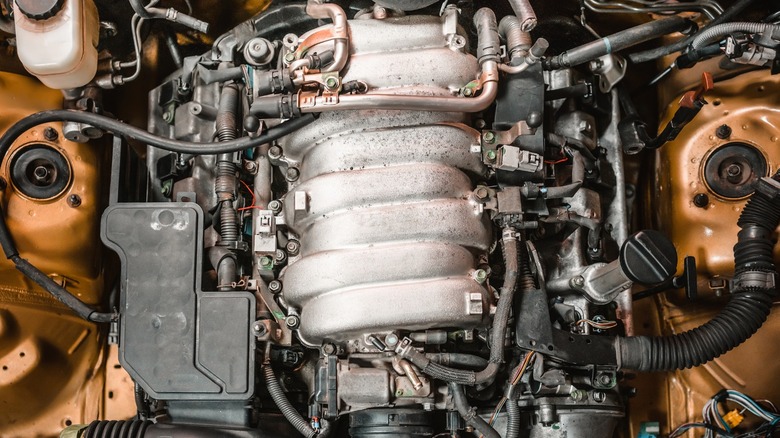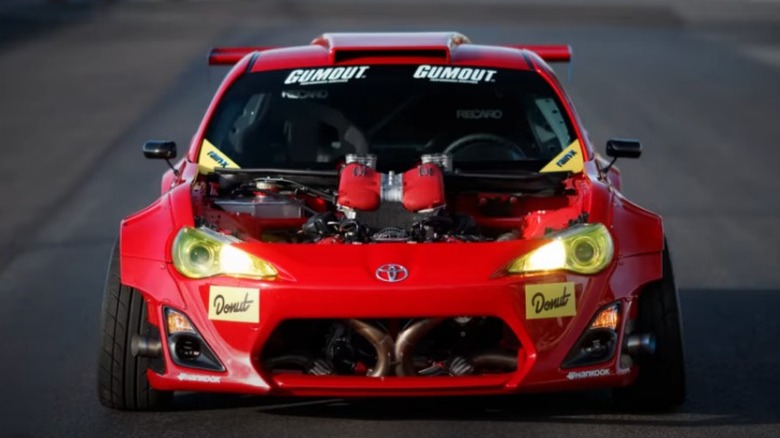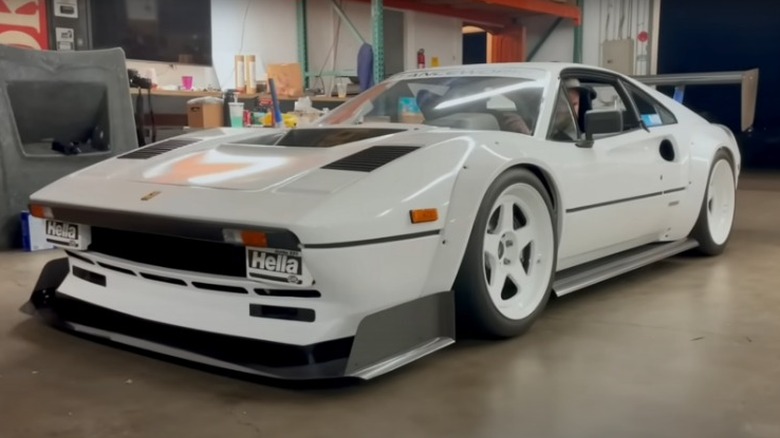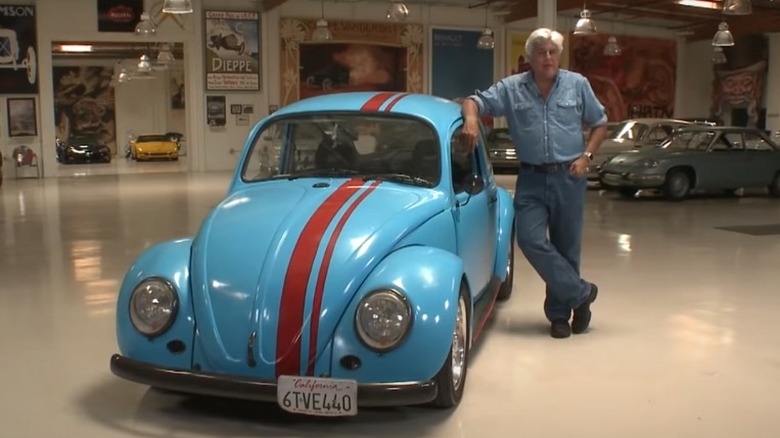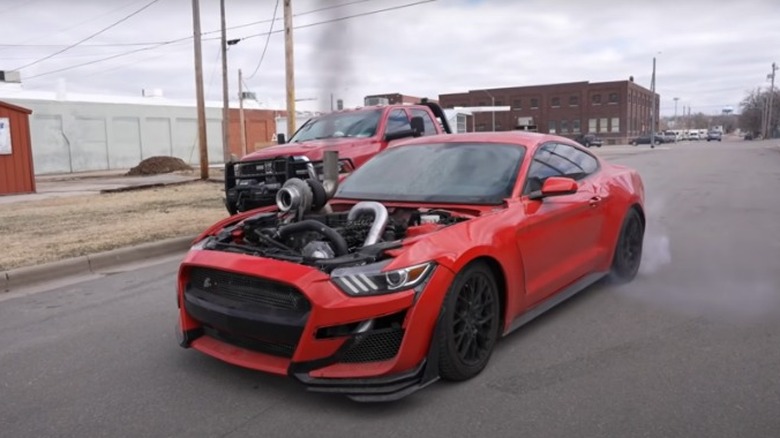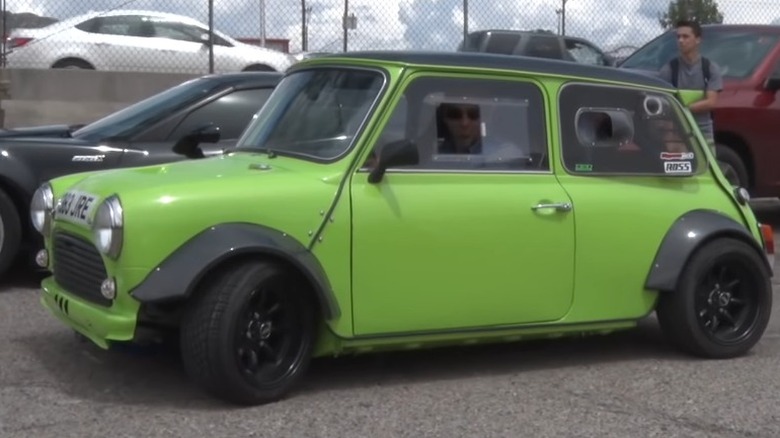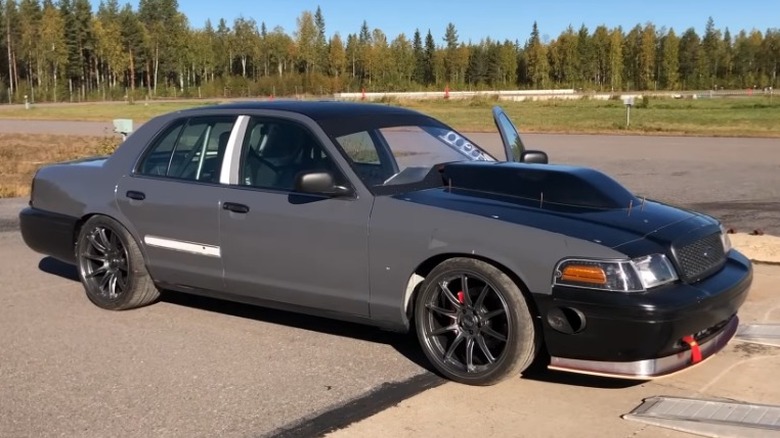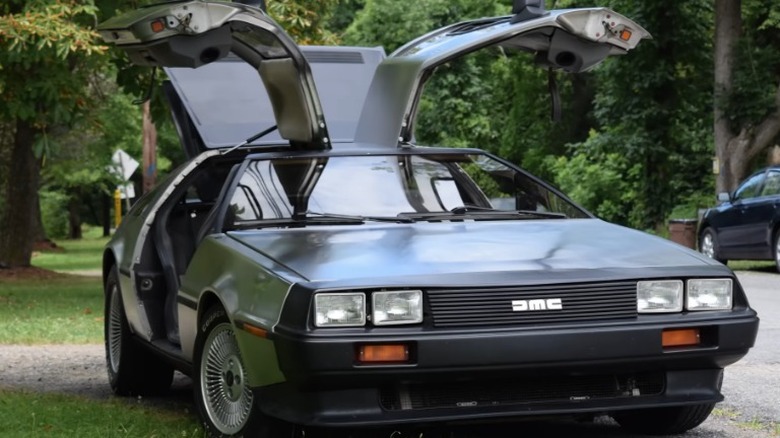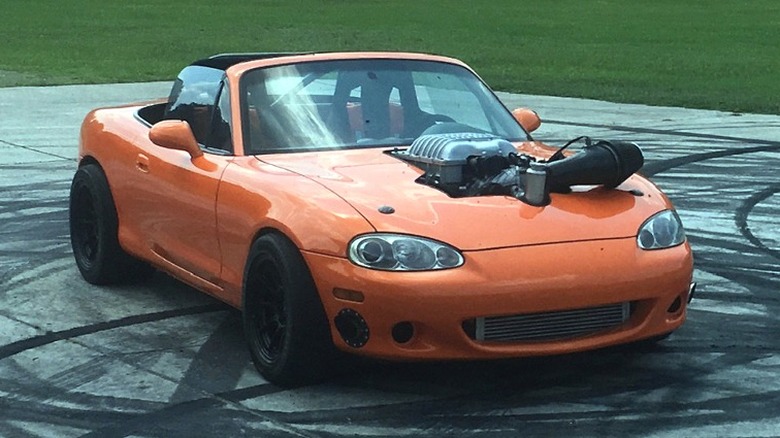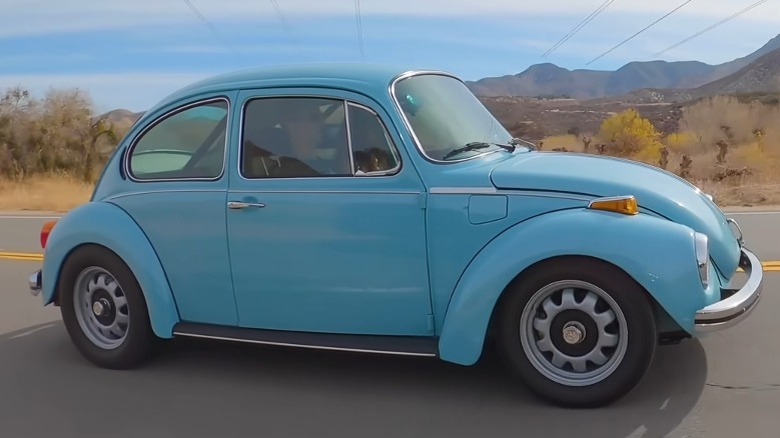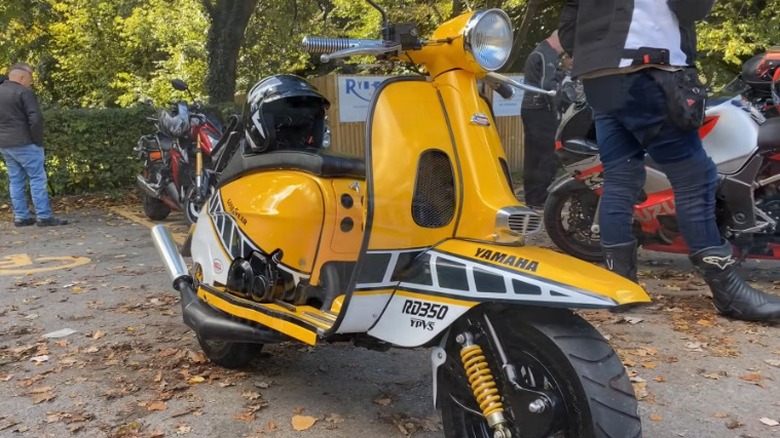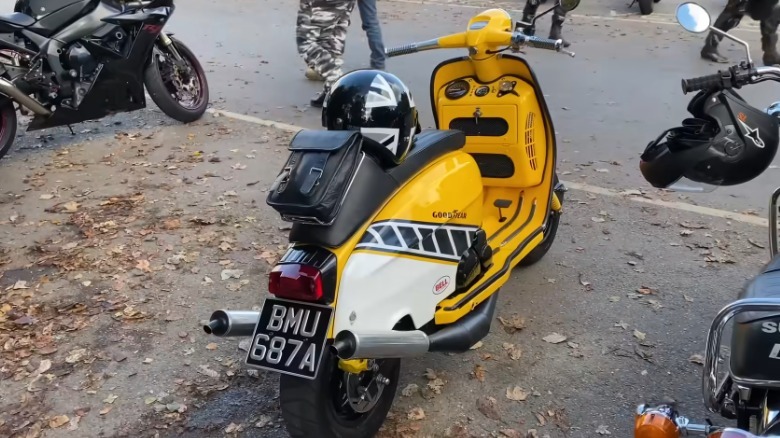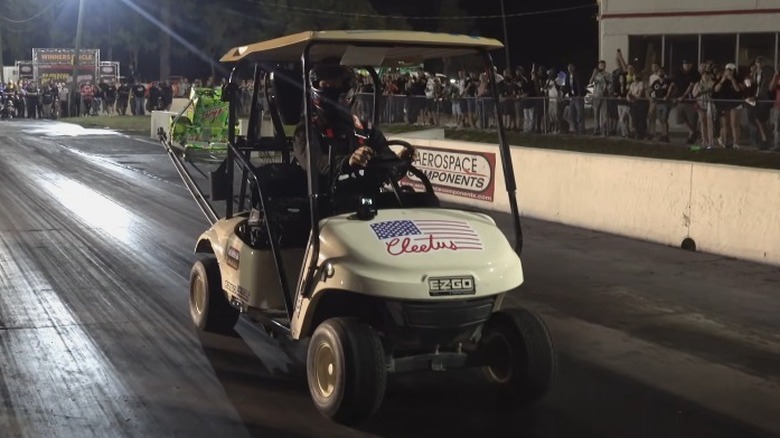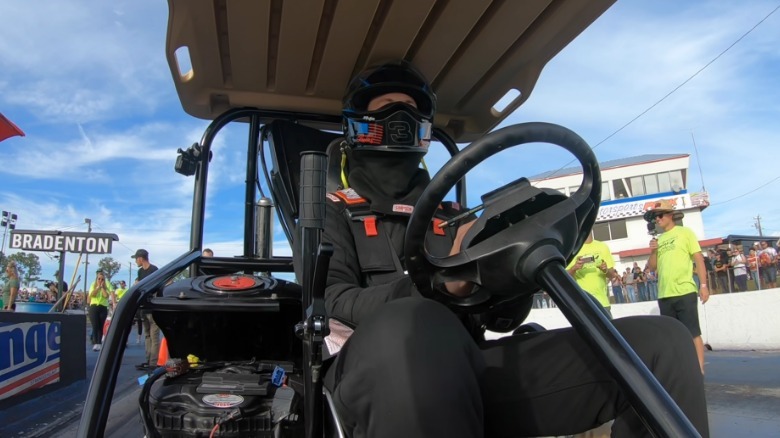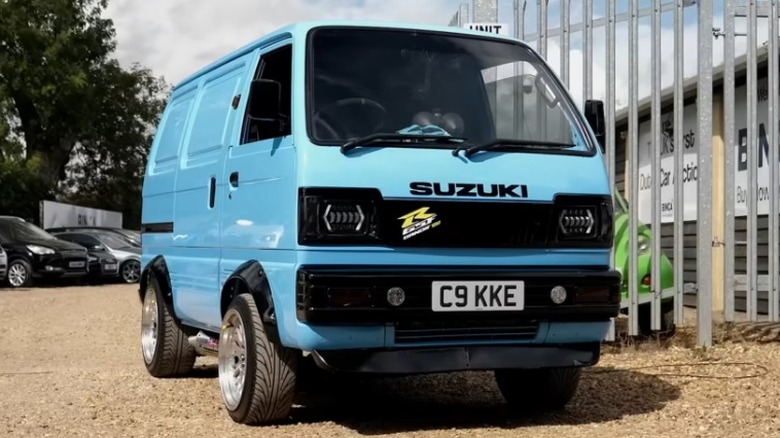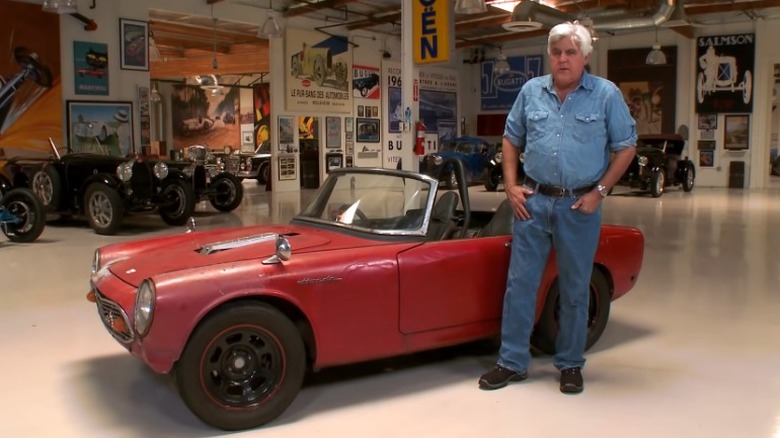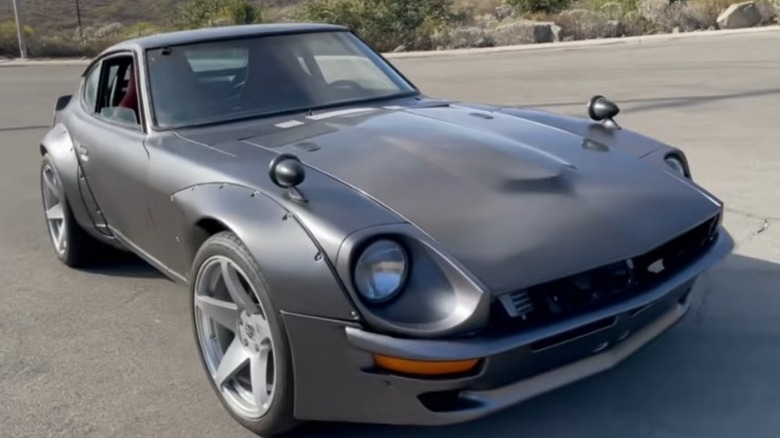Game-Changing Engine Swaps: 12 Incredible Conversions That Took Things To The Next Level
Engine swaps are a time-honored tradition for mechanics who never learned to color inside the lines. Some of the earliest modified cars built to gain power for more speed originated during prohibition. Bootleggers running illegal booze to the black market sought ways to outrun the law and initially took to altering their cars for better performance. The genuine modifications eventually gave way to engine swaps, where a guy running moonshine could switch out his Ford engine for a bigger and more powerful Cadillac while retaining the same look of the original car. This ingenuity and experimentation led to the creation of the modern sport called NASCAR.
Common swaps over the years have involved replacing a 6-cylinder of a base model car for a V8 that was offered on higher-level performance trims. These would be rather easy as the engines going into the cars were made for them and were offered as options for that model. However, some people like to push the boundaries of good taste and mix and match makes and models to create something completely new. And modern technology has also made this endeavor much more technical, requiring high levels of skill as computers have made cars some of the biggest pieces of tech available. Fabricating parts and aligning equipment from different manufacturers is not something learned in school and takes grit and inventiveness to execute well. Some examples of good engine swaps are astounding, and these 12 incredible conversions take things to another level altogether.
Ferrari-powered Toyota
The Toyota GR86 is a fun-driving sports car with excellent handling that uses its modest power wisely to create a great driving experience. However, some want to extract a bit more power out of the little 4-cylinder engine, so turbos and all manner of aftermarket performance parts are available for the car. For at least one copy, a Toyota 4-cylinder just wasn't enough. The Toyota Gumout GT4586 drift car uses a V8 from a Ferrari 548 shoehorned into its engine bay with incredible results.
The GT4586 is an extreme engine swap project that ended up with an extreme drift car. Builder Ryan Tuerck has been driving drift cars professionally since 2005. The chassis of the GR86 is an excellent place to start but has a 4.5-liter Ferrari V8 producing 562 horsepower at 9,000 rpm. As the 458 is a mid-engine car, this one took some extensive modification to install in the front of a Toyota to spin the rear wheels. Power is transferred through a Fortin 5-speed racing transmission since the factory Ferrari unit would not work and the Toyota transmission would be torn to shreds by a V8. This is also not a competition car and appears to be more of a passion project built for the sole purpose of showing off. With Gumout sponsoring this and Donut as a media partner, you can track the misadventures of this Toyota, which have been extensively documented on the Donut YouTube channel.
Honda-powered Ferrari
Sticking a venerated Ferrari power plane into another car is a logical choice as the Italian machines are known for very high power output, but to turn the tables and put an engine from a Honda, best known for highly reliable 4-cylinder engines, into a Ferrari is unorthodox. However, the end product happens to also be just about as cool as it gets. The only way to make it cooler would be to have Tom Selleck pull up in the car himself.
The Ferrari 308 is an icon of the '80s that represents the pinnacle of cool for its time. This is evident by its placement in the popular Magnum P.I. television show. The cars still look great today, but the original 3.0-liter V8 engines really only output around 250 horsepower new from the factory. They were a product of new EPA regulations. So finding a way to add power is a logical choice, even if a Honda K24 engine isn't.
Mike Burroughs from Stanceworks built this project and it is an extremely thorough transformation. The Honda 4-cylinder has been worked over from every corner to now produce 1,000 horsepower and is mated to every imaginable racing product, many of them bespoke for this car. The interior is tastefully redone with a minimalist look and professional detail. The exterior is finished off in white with a custom aero package. You can follow the build of this project on the Stanceworks YouTube channel or subreddit.
Wankel Beetle
The Volkswagen Type 1 is one of the most-produced car models ever built and is commonly known as a Beetle. From the factory, the 4-cylinder air-cooled boxer engines ranged from around 22 horsepower in the earliest models and peaked at just 60 before the final models in North America were sold in 1979. Modifying Beetles has been a cottage industry since the '60s and scores of people have figured out how to squeeze more out of the original engines. Still, others have supplanted the VW blocks with Porsche or Subaru boxers that fit relatively easily.
Mario Markakis chose a traditional route to get more power from his '66 Beetle and used a turbo to bump horsepower up to 125. This was still unsatisfactory, so he chose something completely different. In the rear of his car is a 13b rotary engine from a Mazda RX-7 Turbo, and horsepower is now up to around 250. Rotaries are small engines, making them practical for the rear of a VW, and they can also be tuned affordably. The engine attaches to the original VW 4-speed transmission with an adapter plate and a radiator is hidden up front in the trunk.
It's stealthy and looks like a slightly modified Beetle at first glance, but starting it tells another tale to a trained ear. Mario is just a hobbyist and this is his personal car and was featured on Jay Leno's garage and can be seen on YouTube.
Cummins Diesel Mustang
Westen Champlin loves to do things his own way. Being a farm boy from the Midwest, he loves a good diesel, so why not stick a Cummins in a Mustang? What Champlin calls the SmokeStang is a late model sixth-generation Ford Mustang that has in place of a Coyote 5.0-liter V8 a 6.1-liter 12-valve Cummins diesel straight-6 from Utah's Power Driven Diesel. Equipped with twin turbos, it produces 1,264 horsepower and a staggering 2,200 lb-ft of torque.
The enormous truck engine does fit in the engine bay of the Mustang but is totally open to the elements as it is way too tall for a hood. Needless to say, it is capable of some mighty burnouts and Champlin's tire bill is surely quite high. The name comes from the smoke emitted both from the tire burning and the diesel clouds shot straight up from the turbo in front.
The SmokeStang is akin to an invention by a mad scientist. There is absolutely no good reason for sticking a heavy-duty truck engine from a bus or dump truck into a Mustang. But with the SmokeStang, logic and reason have no place, and that is just fine, especially given that it runs a quarter-mile down Kansas drag strips in about 13 seconds. It can be seen on the Westen Champlin YouTube channel.
Hayabusa Mini
The Austin Mini that debuted in the early '60s is renowned for being an ingenious car design with a then-unheard-of and innovative transversely mounted engine powering the front wheels. Moving the wheels to the outer corners made the car surprisingly roomy and gave it good handling, as well. However, the engines were never built for speed, with the first models having only 55 horsepower.
One extreme engine swap trades the original 1.0-liter 4-cylinder for a very unconventional 1.3-liter 4-cylinder from a Suzuki Hayabusa motorcycle. 1320video features a Mini with this engine swap and is now rear-wheel-drive with the engine in the middle. The 1983 Mini uses extensive modification to harness the Suzuki engine where the rear seats used to be and it produces 240 horsepower, more than four times the original and a substantial rating for a 1,000-pound car. The engine is separated from the passengers behind Plexiglas and air scoops built into the rear windows supply the engine and the original engine bay has been modified to fit a radiator with pass-through air ducts as well as a fuel cell. The Hayabusa is known for being an extremely fast motorcycle, and this car does not weigh a whole lot more, which could make it a bit scary to drive.
A company in the U.K. used to offer kits for this conversion but has ended that portion of its business. There are several cars like this one, but it can be seen on the 1320video YouTube channel.
Tank powered Crown Vic
Rolls-Royce is well known for making fine motor cars, but they also made engines that helped to win WWII. Created as a version of the infamous Merlin engine that powered Spitfires and Hurricanes, the Meteor is detuned and adapted for use on land to move tanks. It makes sense that an enormous V12 with tons of torque built for airplanes could also be adapted for tank duty, but sticking one in an old cop car is a bit ridiculous. Regardless, a group of Swedes has done just that.
The car in question is a retired California Police Interceptor. It is the last generation Panther body Crown Victoria, which originally came with a Modular 4.6-liter OHC V8. It has since been replaced with a 27-liter Rolls Royce Meteor V12. It's obnoxious and wholly impractical, but eternally cool. Meteors produced just 550 horsepower when new, but is now pushing 2,500 thanks to twin turbos and custom-made everything. The car needed significant reinforcement because of the extreme weight, but everything has come along nicely — it even has a custom-made hood that entirely covers the engine.
The Meteor Interceptor is unique and wholly absurd. It answers a question nobody was asking, and it answers it in spades. The torque alone should have ripped the car in half ages ago, but the build continues. It can be seen on The Meteor Interceptor YouTube channel.
LS DeLorean
The DeLorean DMC-12 is an iconic sports car with legendary status ensured by its inclusion in the Back to the Future film franchise. While hitting 88 mpg as a time machine was key, the truth was that the original engine in the car wouldn't get to that speed without some trouble. The PRV 2.8-liter V6 developed jointly by Peugeot, Renault, and Volvo made barely more than 130 horsepower, which was poor even by 1980 standards. So, when it comes time to replace the engine in any car, LS is the answer to everything.
An LS DeLorean was featured in 2016 on Regular Car Reviews, a unique and irreverent YouTube channel dedicated to sometimes brash views on cars owned by regular people. This is a 1982 model that appears to be just like any other DeLorean, except for the engine. The rest of it is largely untouched. However, getting an approximately 300-horsepower Corvette power plant into a DMC-12 takes a lot of fabrication and sheer will. It doesn't fit well and it has too much power for the original transmission, which this one retains, although it had to be moved forward a bit. Other various parts such as brackets and headers had to be custom fabricated and the exhaust now exits through glass packs. The LS makes the car very tail heavy and subject to oversteer, so careful driving is a must. However, it does finally give the car the power and sound that its stunning good looks deserve.
Hellcat Miata
If you thought a Miata really needed an undeniably grotesque amount of power, then you might want to stick a Dodge Hellcat engine in one as these guys did. Truthfully, you probably should not do this, but you certainly can enjoy that it has been done.
The Miata is a small car with a small engine. Part of what Mazda engineers did with the car is to design it with a perfect 50/50 weight distribution to make it the best-handling sports car ever. It is even-keeled and has just enough power to push it through the corners without being overbearing. But with horsepower under 200, it isn't the fastest car around. The guys that run the YouTube channel KARR decided to change that about one particular Miata by stuffing a 707-horsepower Dodge Hellcat engine in the car.
Known affectionately as Hell Kitty, this 1999 Miata is extensively modified to make this swap work. Backing up the Hellcat is a 6-speed manual transmission and Ford 8.8-inch differential. The corners are handled by upgraded suspension and Wilwood brakes. It has a roll cage and everything inside is custom. But the most prominent feature is the giant supercharger sticking out of the hood. The 50/50 weight distribution is gone, but massive power has replaced it. The builder sold it in 2019 at Barrett-Jackson for $36,000. A subsequent owner, unsurprisingly, wrecked it leaving a car meet, claiming a caliper locked up.
Sleeper Beetle
Sleepers are favorites of many people because not everyone wants to build a car to show off. Some like to have a high-performance car without showing their hand until it blasts past potential victims on a street race. Off-road professional racer John Reynolds has just such a car with his 1973 Super Beetle. These were the Type 1 Volkswagens that came out in the early '70s featuring curved windshields for the first time, but they also received upgraded MacPherson struts, which greatly improved the ride and handling. Reynolds went on to improve his Bug a bit more.
This car is equipped with a dual-cam Subaru boxer engine mounted in the rear but has been modified in its build and installation. The power output is 517 horsepower fed by a turbo with as much as 29 pounds of boost. The mounting is all done with custom fabrication and executed such that there is no evidence of it from the outside. The only indication this Beetle is something special comes from the 8-inch wide tires, which required a lot of work to keep them well within the original fenders. The original tiny dual exhaust pipes are still poking out the back, but they are piped to the turbo wastegate, and much beefier custom headers are hidden below. Be wary of any light blue Beetles trying to race you in Southern California because you will most assuredly lose. You can get a full tour on Nicole Johnson's Detour YouTube channel.
Yamaha-powered Lambretta
Cars are not the only thing that can get a creative engine swap. Why not do one with a classic Lambretta motor scooter? Lambretta scooters were born in the post-war period with the need for cheap transportation in Europe. It became wildly successful but ultimately closed by 1972. Most models came with 125cc engines but some models went up to 150 or 175. Even with the largest engines, Lambrettas are famously stylish, but not terribly fast. Hence, a custom turn to Yamaha.
Under the seat of this 1960s scooter sits a water-cooled 2-cylinder Yamaha engine from an RD350. It replaces the single-cylinder air-cooled unit but remains a 2-stroke. This means it's a rev-happy monster in this tiny frame and puts out unfathomable power to be handled by the 10-inch wheels. The owner claims the original horsepower rating is somewhere around 6 and is now boosted up to 69. It took plenty of creative engineering and fabrication to make it work and the ingenuity can be seen in things like the hidden radiator in the glove box. The wiring is a mix of Yamaha and Lambretta, but some original Yamaha gauges have been incorporated into the scooter frame. The dual exhaust pipes, swing arm, chain, and disc brakes are obvious giveaways that this scooter is something special. This installation is incredibly clean and sorted, and it shows the builder possesses a great deal of skill. Stone Automotive interviewed the owner for its YouTube channel.
CBR1000 E-Z-GO
If you browse the videos uploaded to the YouTube channel of Cleetus McFarland, you'll find an endless stream of nutty car builds and other assorted machines that are then put through various antics, usually to comedic effect. One creation resulted from a build-off competition in which the participants merged a Honda CBR1000 motorcycle with an E-Z-GO golf cart.
The way they put this thing together is genuinely clever. Mating a superbike to a golf cart takes a lot of fabrication because nothing at all is supposed to be matched between these two vehicles. The engine sits in the place of a passenger and it retains the fuel tank in the original position above the engine while the rest of it sits below with the chain running back to a custom axle for the rear wheels. Even though it does have a full roll cage and racing-style seat, it is clearly a very dangerous thing to drive as it has so much more power than it should ever have and ends up "sketchy" as they say in the videos. The golf cart is eventually said to remain a novelty and kept just for show so nobody gets hurt driving it. However, they do take it for a round at a local golf course where, near the end of their game, they are asked to leave with it.
GSXF Suzuki Super Carry
The Suzuki Super Carry is a small Japanese market van classified as a kei car, with an engine of 660cc or less. Because of the limited engine size, the Super Carry is rugged and useful, but it is in no way quick. However, that is nothing a good old-fashioned engine swap can't fix.
At least one Briton owns one of these little vans with an all-Suzuki swap. Calvin's Car Diaries interviews the owner and takes a tour, including driving, gaining insight into the what and why of this unique little van. The owner bought it with the engine already installed. Packed into the van is a 4-cylinder engine from a Suzuki GSXF Bandit that measures 1,250cc, nearly double the original 3-cylinder plant. The factory horsepower rating of 70 is now roughly doubled and the power is sent to the wheels through the same sequential 6-speed gearbox from the bike.
Mike says the engine is located mostly about where the original went, and it obviously took a lot of customization to make it work. Accompanying the motorcycle engine is the original motorcycle tank mounted in the cargo area to supply fuel and the gauge cluster from the bike sits on the dashboard. This little van is way too fast for its own good — 20 to 70 mph takes 10.59 seconds — and looks like you could flip it in an instant. Although, if the right side is kept up, it will turn heads wherever it goes.
CBR1000 Honda S600
Honda got its start with small and affordable motorcycles, but soon after it began auto production and one of the first cars from the company is the S600 roadster. It came with a 600cc 4-cylinder engine that produced just 57 horsepower sent to the rear wheels through a chain drive. It is very small but attractive and the styling is timeless. Honda has made many engines in the years since then, so Matt Brown thought it would be wise to upgrade the little 600 a bit.
Featured in an episode of Jay Leno's Garage, this little Honda can be noticed immediately for a protrusion sticking out of the hood. A hole had to be cut to accommodate the engine from a much later Honda CBR1000 motorcycle engine, creating nearly triple the original horsepower. It's installed in place of the original, but a hole was needed due to its height. It retains the 6-speed sequential gearbox, but power gets to the rear through a differential from a BMW with Mista half shafts. Perhaps the best part of this car is that after he had all the mechanicals laid down, nothing was done to the exterior. It shows the natural patina of a car stored in Pappy's garage for a couple of decades, complete with dents, scrapes, and faded paint. It looks brilliant and it runs fantastic. Jay and Matt rip down the California highway, and you can tell they are having a blast.
Turbo Diesel Datsun 240Z
The Datsun 240Z is one of the best classic cars to ever come from Japan and the original drivetrains are excellent. That means there is no good reason to swap it for a black cloud-spewing turbo diesel, but who needs a good reason anyway?
While Westen Champlin's Cummins diesel Mustang is an example of an extreme diesel swap, this Datsun is a bit tamer. Featured on the Team Boosted YouTube channel, the diesel Datsun exchanges the original straight-6 for a Mercedes 4-cylinder turbo-diesel. Although this is one of the weirdest matches you could think of, the car is a runner. The build is documented throughout the channel, with videos showing everything coming together as well as dyno runs showing the Mercedes diesel capable of pulling in excess of 500 horsepower. It is an interesting and incongruous sound to hear coming from this car, but that makes it no less cool. It also helps that the car is done well with matte gray paint, flared fenders, and large contemporary wheels. They say it started out as, "a purple piece of crap," but it turned out great and comes with a tremendous black smoke performance.
